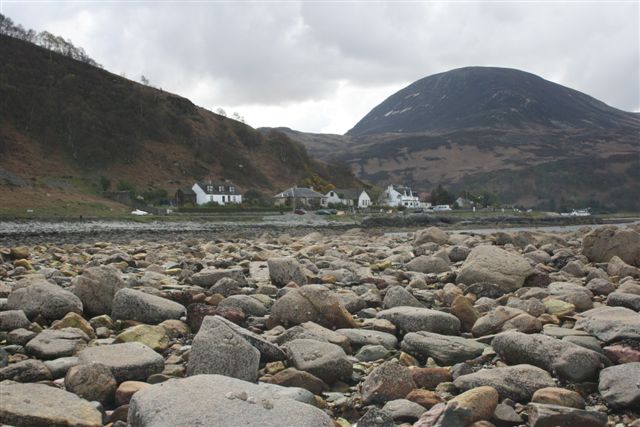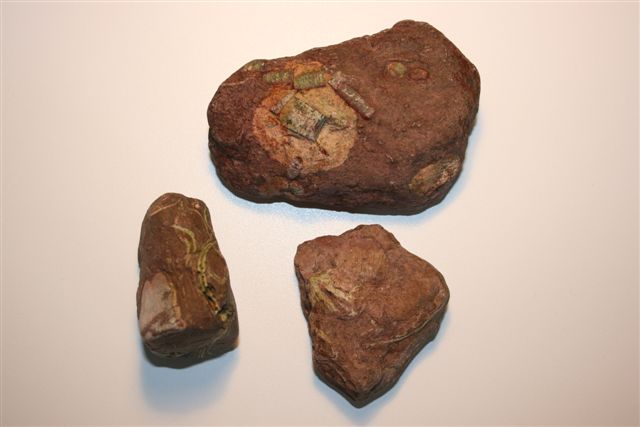| 30th April 2008 | |||||||||
| ARRAN - CATACOL | |||||||||
Tour: self |
|||||||||
Weather: dry, but cloudy The Catacol Cairn This feature is described as follows in Macgregor, Excursion Guide to the Geology of Arran (1968): "About three-quarters of a mile north of Catacol [village centre] there is a bank of loose boulders only exposed at low-water and separated from the beach by a shallow channel. Cowie described this in 1901 as a shoal of blocks and shingle consisting mainly of fragments of a massive red limestone with Productus and other shells, pieces of a red shaley limestone packed with shell debris (crinoidea and polyzoa) together with pieces of red and grey sandstone, quartzite, conglomerate and dolerite of all sizes and generally angular. He suggested that the "shoal" forms part of a moraine lateral to ice moving down Kilbrannan Sound from the north. In the same paper, he described a shoal occurring on the north shore at Lochranza and containing, in addition to pieces of granite and slate, boulders of limestone, sandstone and breccia similar to those at Catacol. Gunn (1903) described this bank or shoal under the name "Catacol Cairn", and gave a list of the fossils obtained from the loose limestone blocks. This list includes corals, brachiopods, lamellibranchs [bivalves] and crinoidal [sea lily] remains. He rejected the idea of a moraine as not very probable since the "nearest place where rocks of this kind occur in situ is more than 2 miles away to the east of North Newton", and suggested that the blocks may have been cast up by storms from an outcrop not far away, beneath the sea. B. N. Peach accepted this view. The reader should note that Gunn makes no mention of the similar "shoal" on the north shore of Loch Ranza. Perhaps the source of the carboniferous rocks on both localities is an undersea extension of the outcrop in the Allt Mor". |
|||||||||
|
|||||||||

